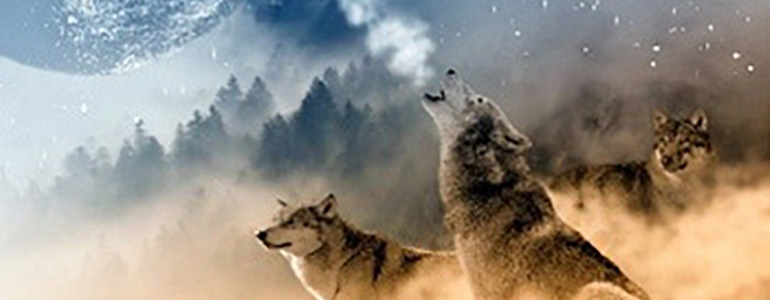Here is an under 2-minute video that captures the main ideas of this blog post:
In 1995, the National Park Service reintroduced a number of wolves into the Yellowstone National Park. Absent from that territory for 70 years, the wolves – captured and transported from Canada – were initially kept in reintroduction pens where they were fed the carcasses of elk, deer, moose, or bison that had died in and around the park. The wolves were guarded and cared for under protocols designed to minimize human contact and thus reduce human habituation among the wolves. They were quickly ready for release into the park. In the years since their release, they have increased in numbers and range, with at least 99 wolves in 10 packs living primarily in Yellowstone and 528 wolves living within the Greater Yellowstone Ecosystem.
The impact on the ecosystem has been significant and illustrates the power of a complex adaptive system. Some impacts were easily anticipated. The wolves have fed on deer and elk, reducing those populations from previous levels that had necessitated human intervention efforts due to habitat strain. But wolf predation also kicked off a phenomenon known as a “trophic cascade.”
In this cascade, a relatively high-level predator’s increased activity reduces the numbers and predation at the next lower level allowing the level below that to increase. In this case, the decrease in deer, elk, and other hoofed wolf prey removed a burden on the vegetation, allowing it to flourish. The enhanced vegetation then increased the food supply and cover for small animals.
The effect of the reduction in deer populations was leveraged by the changing patterns of movements in those herds as they sought to avoid terrain where they could be easily hunted by wolves using their pack behaviors. The avoided areas also became well vegetated and home to small mammals and birds as well as their predators like foxes, hawks, and badgers. Additionally, wolves killed and expelled coyotes which further helped to increase the small animal populations.
The reforestation of hillsides and riverbanks created habitats attractive to beavers whose dams have created homes for fish and crustaceans. Perhaps the most startling effect of the revegetated hillsides and riverbanks is the stabilization of the soil and slopes by plants and trees. Without loose soil erosion depositing silt into waterways, the channels of rivers are narrower and more direct. Riverbanks themselves are more solid and stable, decreasing erosion and deepening the stream channels. The presence and activity of the wolves has literally altered the course of rivers.
The reintroduction of wolves into the complex adaptive system that is the Yellowstone ecosystem has set off a series of reverberating changes and compensations. While one might cavalierly predict that a deer overpopulation could be beneficially reduced by building a wolf population, it would be difficult to foresee all the changes that would result. Some opponents of the reintroduction program (there were a record 160,000 comments in response to the program proposal) called attention to unintended deleterious effects. For example, opponents identified the potential for the wolf population to establish beyond the park borders where they could kill domestic animals and livestock.
Even these comments were somewhat linear and direct – more wolves equal less deer (or livestock). But the real power of a system lies in subtler effects. Not only are deer killed by the wolves, but they change their movement patterns, avoiding terrain where the hunting wolves might use the ground features to cut them off. This means that vegetation in the avoided areas is no longer subject to the deer herd grazing and trampling about. Agents in the complex adaptive ecosystem, the deer alter their behavior in response to the perturbation in their environment.
The relatively small input of reintroducing 60 some Canadian wolves into the Yellowstone ecosystem demonstrates a surprisingly large and diverse impact. Fewer deer were predictable – but more badgers? Such is the nature of complex adaptive systems and the reason behind the complex problems they present. How fascinating that a few wolves could bring with them deeper, straighter rivers.






